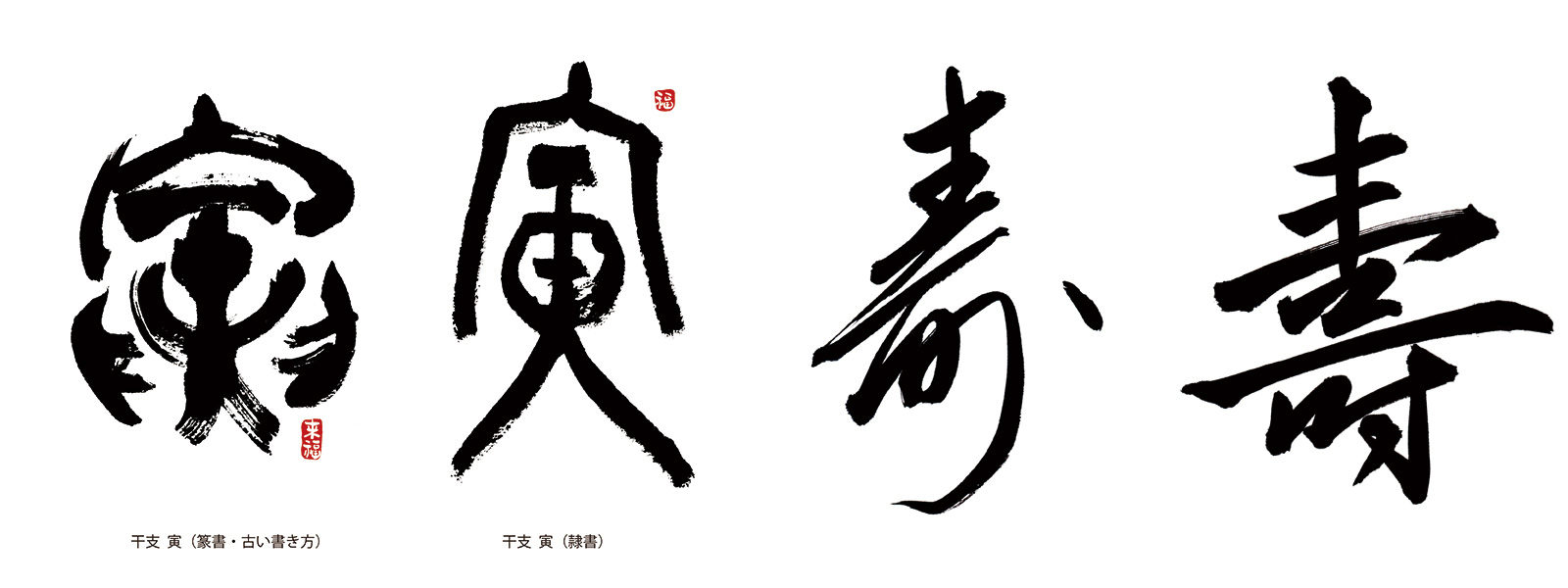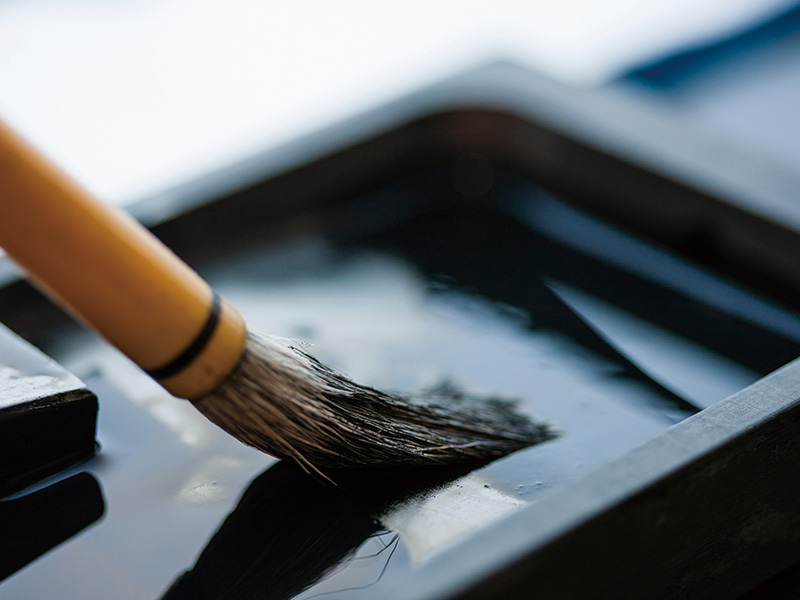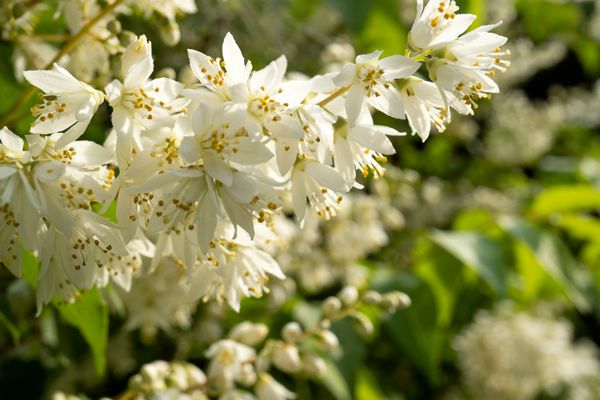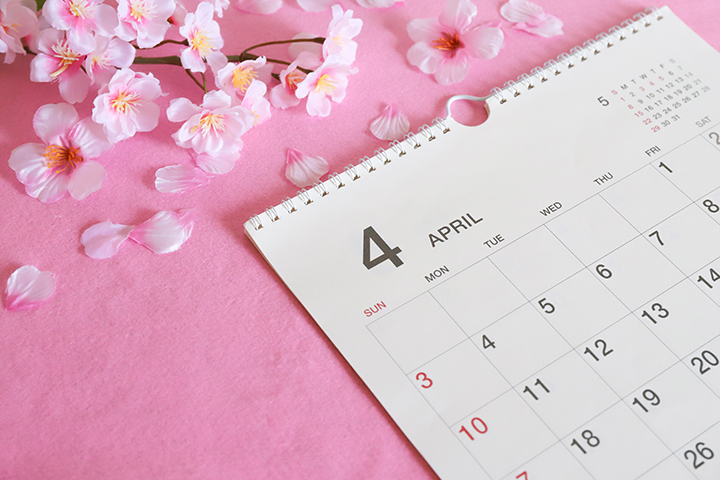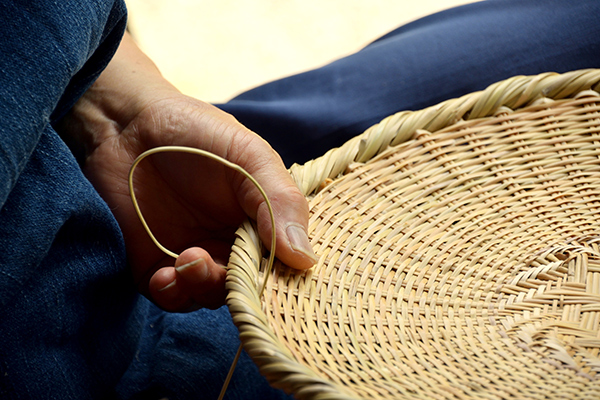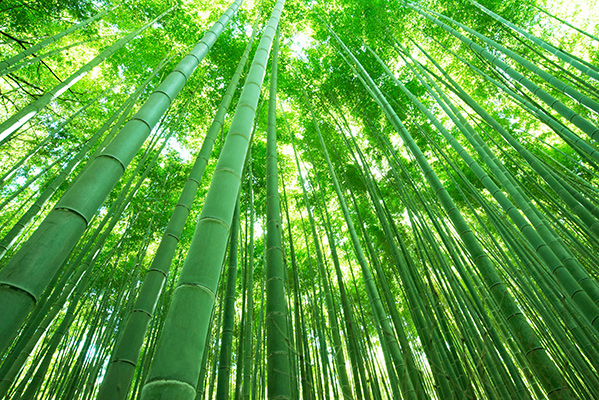Calligraphy, which was introduced from China during the Yayoi period, is now cherished as a traditional culture and art in Japan. This article will introduce the essential 'Four Treasures of the Study' for calligraphy, along with some representative scripts.
The 'Four Treasures of the Study': Essential Tools Cherished by Chinese Scholars
Basically, the essentials for calligraphy are brush, ink, paper, and inkstone for grinding the ink. In China, these four items—brush, ink, inkstone, and paper—are called the "Four Treasures of the Study" and were always present in a scholar's study.
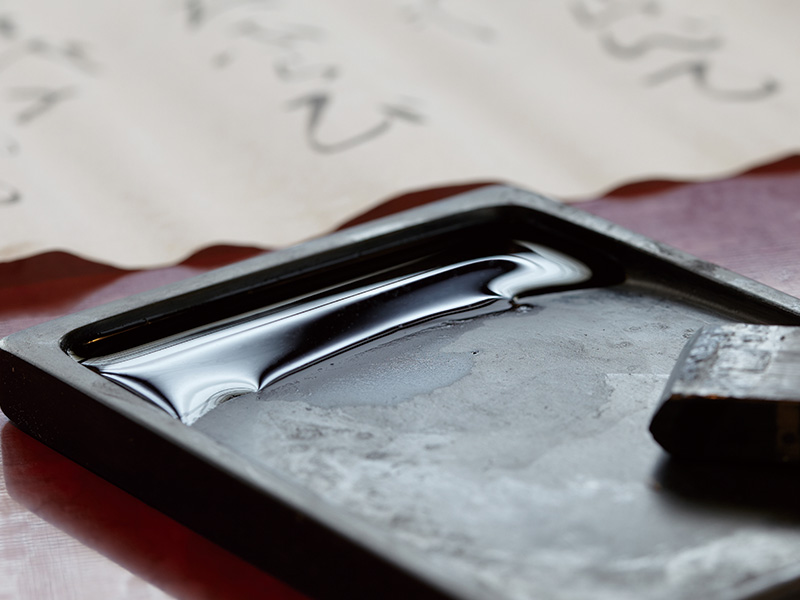
Inkstone
Brushes are mainly made from the hair of animals such as goats, sheep, horses, raccoons, and weasels. Each type of hair has different qualities, and they are chosen based on the script style or the desired expression.
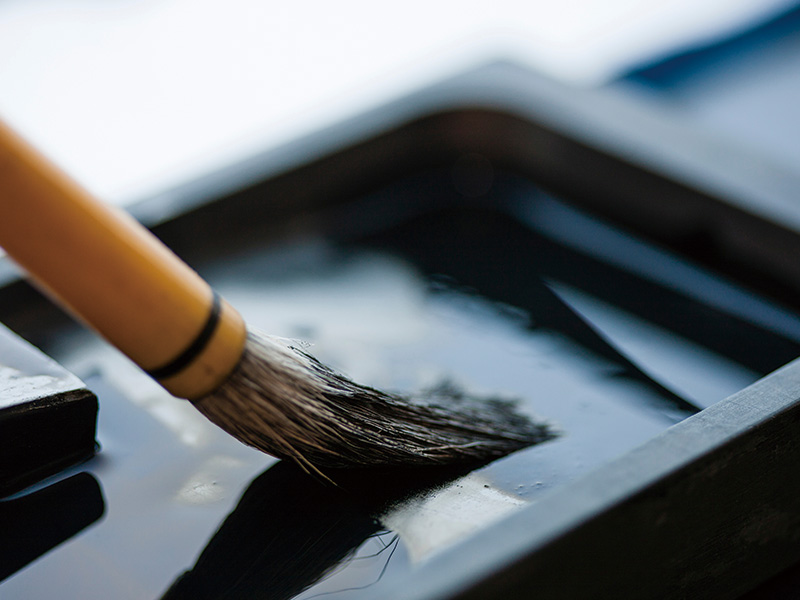
Ink is made from soot or animal bones and skins boiled down to create glue, combined with fragrances and solidified. Originally, fragrances were added to mask the smell of the glue, but many people find the scent of grinding ink to be soothing.
Inkstones can be made from various materials such as ceramics, stone, and metal, but in China, the birthplace of calligraphy, stone inkstones have been cherished since ancient times. Among the Four Treasures, inkstones are particularly valued, and antique inkstones are often traded at high prices.
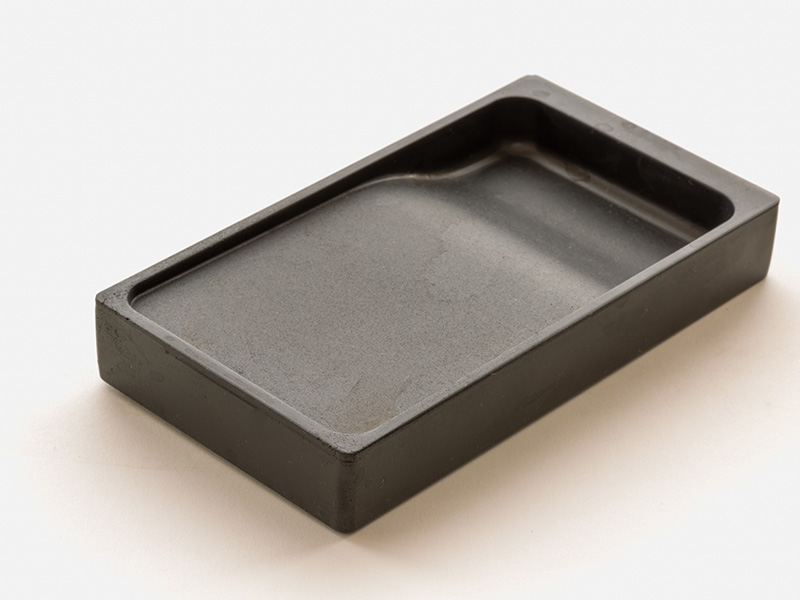
The paper used in calligraphy is broadly divided into "washi" and "karakami." Washi is made primarily from plants like kozo and mitsumata, and is thin yet durable, smooth on the surface for easy brush movement, and resistant to color change over time. On the other hand, karakami is made mainly from bamboo, straw, and mulberry, and its shorter fibers allow ink to seep in easily, making it suitable for expressions that utilize "smudging."
There are six main styles of calligraphy
The styles of calligraphy primarily used are "Seal Script", "Clerical Script", "Cursive Script", "Semi-cursive Script", "Regular Script", and "Kana", which originated in Japan during the Heian period. Over time, these styles have evolved to improve readability and ease of writing. The following sections introduce each style in the order they were developed.
【Seal Script】
Seal Script is considered the oldest style of calligraphy, believed to have originated around the 4th to 3rd centuries BCE. In ancient China, various scripts were used in different regions, but when Emperor Qin Shi Huang unified the country, he established the standardized script known as "Small Seal Script." This script has been passed down and is still recognized as Seal Script today. In Japan, it is used for official seals, the cover of passports labeled "Nihon-koku Ryoken", and the imprints on banknotes.
Characteristics of Seal Script:
The thickness of the lines is uniform.
It is symmetrical.
The characters are elongated vertically.
Horizontal strokes are level, and vertical strokes are straight.
The spacing between strokes is even.
It features curved lines.
【Seal Script】
【Seal Script】
【Clerical Script】
Clerical Script is a simplified and more easily written version of Seal Script, which has many strokes and is difficult to write. It was used as an official script during the Han dynasty (202 BCE – 220 CE). A distinctive feature of Clerical Script is the "wave stroke", where the sweeping strokes form a triangular shape.
Clerical Script is used in various places, such as the text "Nihon Ginkōken" and "Ichiman-en” printed on Japanese 10,000 yen banknotes, as well as on building nameplates, newspaper and book titles, and more.
Characteristics of Clerical Script:
The characters are flat and wide.
Compared to Seal Script, it has more angular shapes.
It is symmetrical.
The spacing between strokes is even.
The sweeping strokes on the left and right form triangular shapes, known as wave strokes.
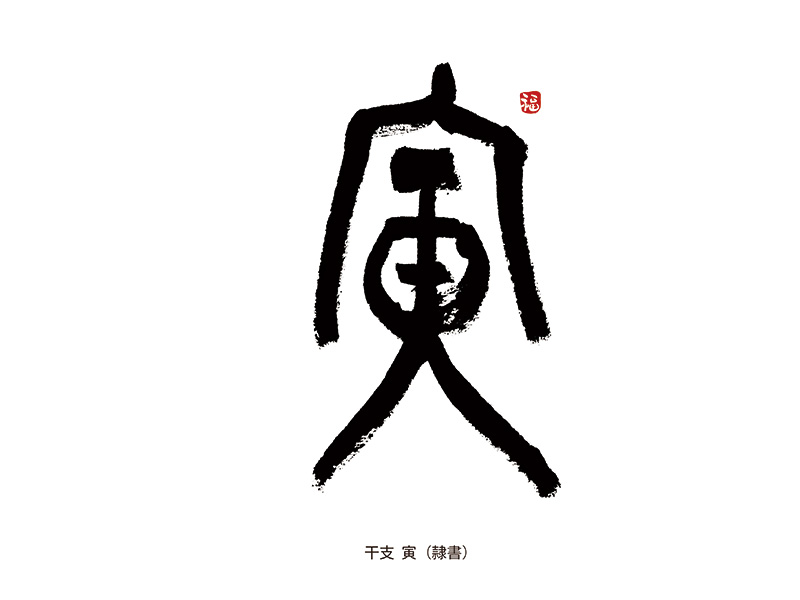
【Clerical Script】
【Cursive Script】
Cursive Script is believed to have originated during the Western Han dynasty as a further simplification of Clerical Script for faster writing. By connecting strokes and dots to the utmost extent, it creates a flowing movement, allowing for a wide range of personal expression by the writer.
Characteristics of Cursive Script:
No fixed character shapes
Fluid and dynamic
Many characters are difficult to read at first glance due to the emphasis on speed
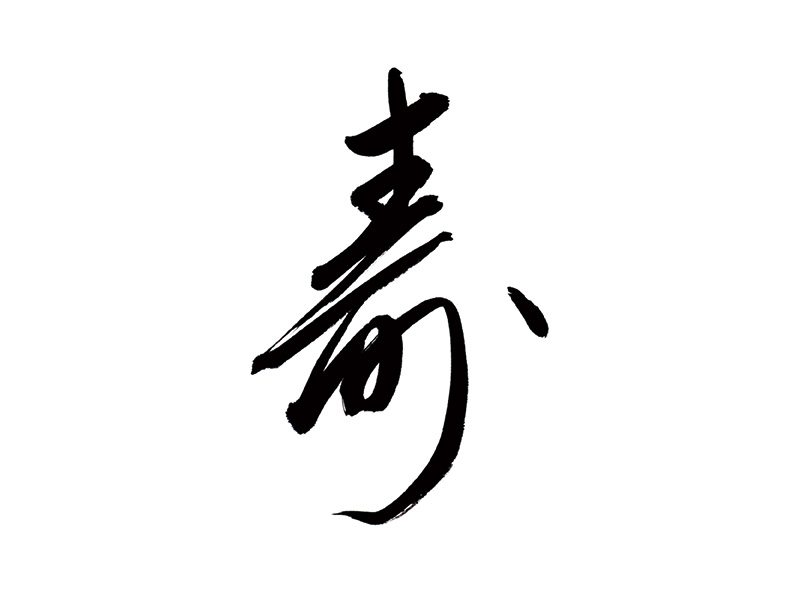
【Cursive Script】
【Semi-cursive Script】
Semi-cursive Script, like Cursive Script, evolved from Clerical Script and originated during the Later Han dynasty. By partially simplifying strokes and dots, Semi-cursive Script allows for faster writing while remaining more legible compared to Cursive Script.
Characteristics of Semi-cursive Script:
Although it is a cursive style, it is easy to read
Strokes and dots may be connected
Strokes and dots may be simplified
The order of strokes may vary
Fluid and curvilinear
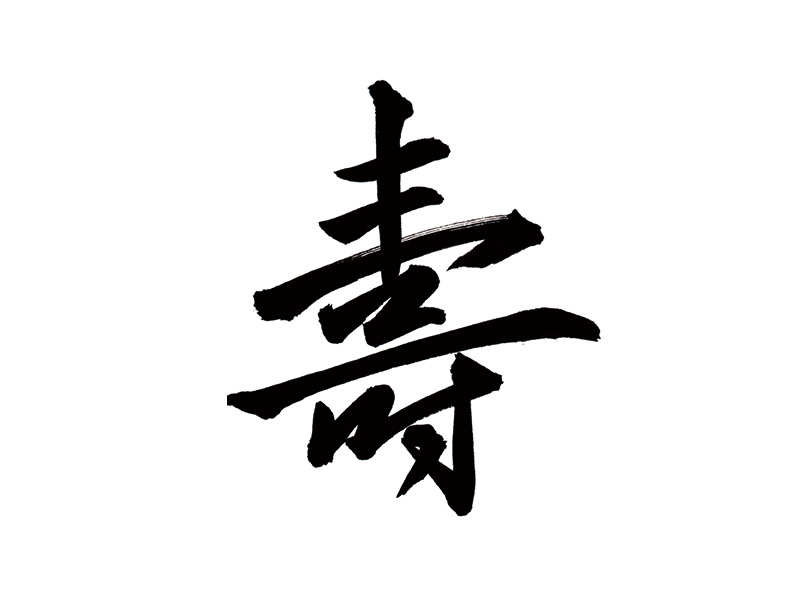
【Semi-cursive Script】
【Regular Script】
Regular Script evolved from Clerical Script to become easier to write and read, and it is the standard script most commonly seen in modern Japan. Although there are various theories, it is believed to have been established during the Tang dynasty. Regular Script, where each stroke and dot is written clearly without omission or connection, is also the foundation of calligraphy.
Characteristics of Regular Script:
Strokes and dots are written clearly without omission or connection
Written with the correct stroke order
Horizontal strokes tend to rise slightly to the right
Well-balanced and easy to read
Linear and straight
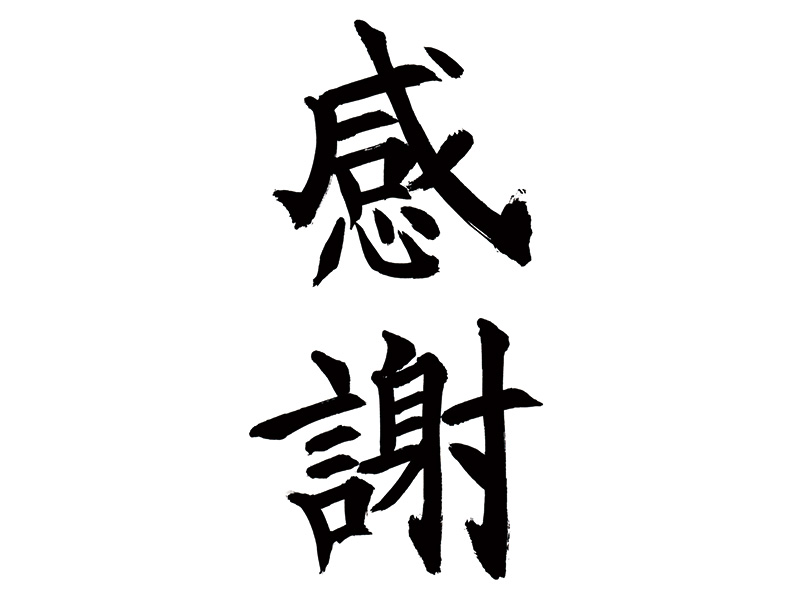
【Regular Script】
【Kana】
Kana is a unique Japanese script believed to have been established during the Heian period. Originally, the Japanese did not have their own writing system and used Chinese characters. To express themselves more richly, they created "Manyogana," which utilized the sounds of Chinese characters. Further simplifying these characters to make them easier to read and write led to the creation of Hiragana and Katakana.
During the mid-Heian period, women were prohibited from learning Chinese characters, so they used Hiragana to compose poetry and write diaries. Because of this, Chinese characters were called "men's characters" or "men's kana," while Hiragana was referred to as "women's characters" or "women's kana."
Characteristics of Kana:
Hiragana is curvilinear, while Katakana is linear.
Katakana is often used for foreign words and onomatopoeia.
In Kana calligraphy, multiple characters are often written continuously, a style known as "renmen."
Summary
Hiragana
Katakana
The Japanese are known for their ability to adapt and evolve foreign cultures uniquely. The creation of Hiragana and Katakana from Chinese characters is a testament to this. When viewing calligraphy works in museums or galleries, paying attention to the script styles might enhance your appreciation.




